Proper tree selection can sometimes be challenging even for experienced hammock campers. If you are new to hammock camping, I hope these 12 tips help you identify good trees for your hammock set-up. The process may seem simple, but there is actually quite a bit to learn about hanging from trees.
As a note, wherever you decide to camp, please be aware of the rules when it comes to hammock camping. Some parks and areas that do not allow hammock camping. Also, do your research on your destination beforehand to determine the rules and if there are already established campsites for hammock campers.
1. Size
When I am searching for trees, I look for strong, stable, and healthy trees. The tree must be large enough to hold my weight without risking damage to me or the tree. A good rule of thumb is, if you can shake the tree, you shouldn’t hang from it. If you can move the tree, it is too small and you will likely damage it. The tree needs to be mature enough to handle the weight load. I know this is super basic and most people don’t even think about it, but it’s something that you need to keep in mind when you’re roaming the woods trying to find that perfect grouping for your campsite.
YOU MAY ALSO ENJOY: Do Camping Hammocks Harm Trees?
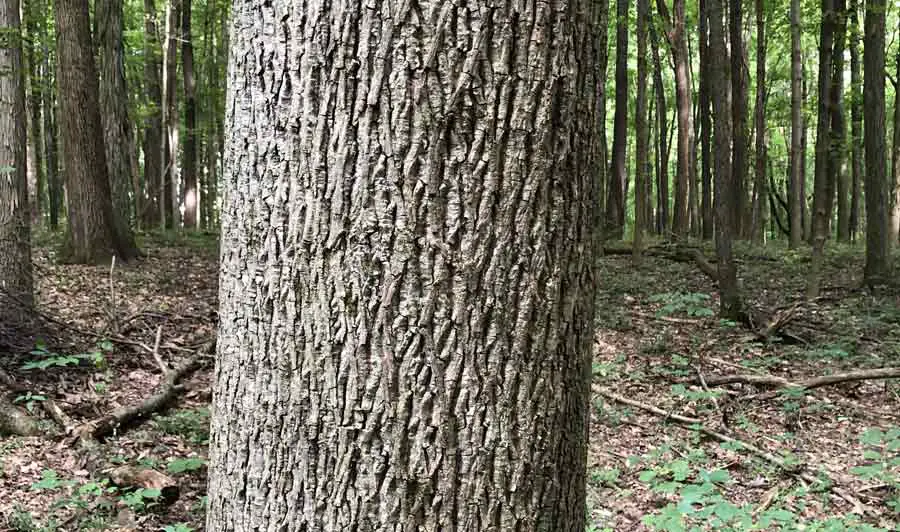
2. Diameter and Circumference
The width, or diameter, of the trees is also something you need to pay attention to. It can be a little challenging sometimes to find the right size tree that has a suitable diameter as well. Usually, the problem you will run into is that the diameter of the tree is too large and it eats up your strap length. The ideal tree will be around 12 inches in diameter. The thing you have to keep in mind is that the larger the tree trunk, the less strap length you will have. Keep in mind that a 12-inch diameter tree will take just over 3 feet of your straps to go around the entire circumference of the trunk.
THIS ARTICLE MIGHT HELP YOU TOO: Can You Safely Connect Two Hammock Straps?
3. Distance and spacing between trees
I’m going to state the obvious here, so bear with me. You will need two trees. Once you find two trees that will safely accommodate your hammock, it is now time to figure out if they are spaced far enough apart.
I generally choose trees that are about 6 paces apart. If you aren’t familiar with pacing, it’s when you walk as you normally would between the two trees and count every time your right foot hits the ground. I find that 6 paces allows me to achieve my ideal hang, but others swear by 5 paces. You will have to experiment to see what works best for you.
There is a bit of overlap when it comes to spacing and the tree diameter. If the diameters of the trees you chose are larger, you will need to do one of two things. 1) As mentioned above, you may need to extend your straps or 2) find another place where the trees are closer together. Either way, you will have to adjust for the loss of strap length.
4. Poisonous plants
I highly recommend becoming very familiar with the poisonous plants that grow on or around trees. If you don’t want to have a miserable outing, then heed this advice. Granted, some people are not allergic to these plants, but even if you are not allergic, you still need to be careful not to spread poisonous plant oil to other people who might be.
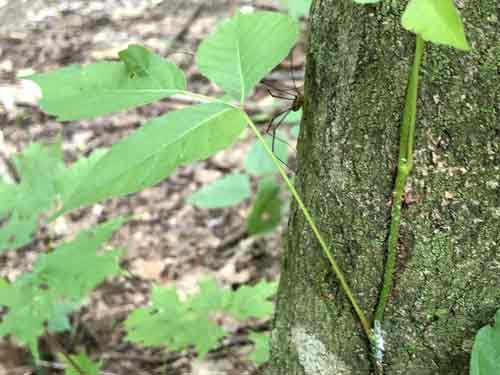
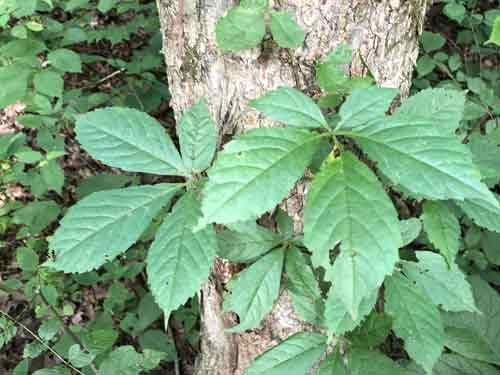
All areas are different, but you always have to be aware of the dangerous plant life that you may come in contact with. There are different types of plants that are poisonous and some of them like to climb trees. The most common poisonous plants are: poison ivy, poison oak, poison sumac. The area around my home and where I go hiking the most is thick with poison ivy. Since it is so prevalent, I make sure that my family also knows how to identify it and tell the difference between poison ivy and Virginia creeper, which is harmless.
When you are choosing trees, look around the tree’s trunk for any poisonous climbing plants. If you find one, I recommend that you walk away from that tree and find another. It’s just not worth the risk. Also, walk around the tree and see if there are any on the ground where your campsite will be. Use your best judgment and if you are unsure about a plant, move on.
5. Brush
Avoid trees that have brush growing around them. It happens a lot. You find the perfect trees, but there is too much brush around the trees and under where your hammock would hang. Bushes with thorns are common and aren’t fun to deal with or to try to get around. They will poke holes in both you and your gear. Take my word for it – skip the brush-covered trees.
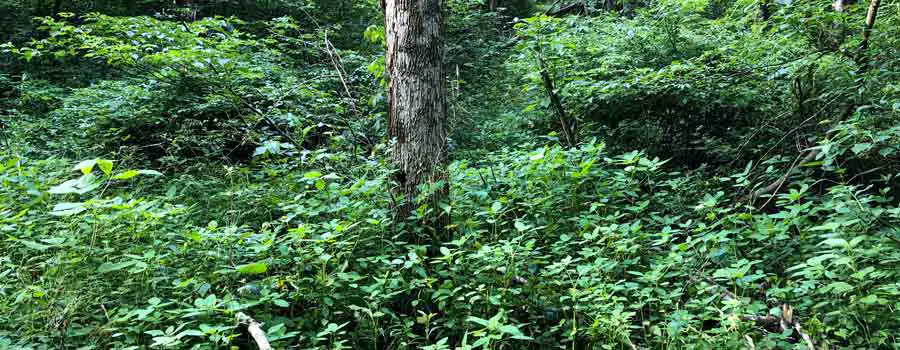
I’ll admit, sometimes dealing with brush is unavoidable and you have to set-up your hammock where you can. I have been camping with my boys for Cub Scouts and trees with lots of brush around them were all that we had available to use. It’s no fun, but we made it work. However, we didn’t come out unscathed. Scratches are inevitable and we definitely had them.
6. Dead Branches
Always make it a habit to set up camp before dark while you still have daylight. Doing so will greatly reduce your chance of injury due to falling dead branches. Part of identifying healthy trees is looking at the whole tree as opposed to only the trunk. You will need to have enough daylight to be able to look up into the canopy. You need to look for dead branches that don’t have any leaves. In the hammock camping world these branches are called, Widowmakers. It’s not hard to come to the conclusion as to why they are named as such.
The danger is when these dead branches fall from the canopy. You do not want to risk hanging from a tree that has the potential of hurting you, or worse, killing you. More times than not, the weather is unpredictable when I am hammock camping. Wind and storms in the night are common and there is a high risk that any dead branches hanging out in a tree will be dislodged and fall to the ground.
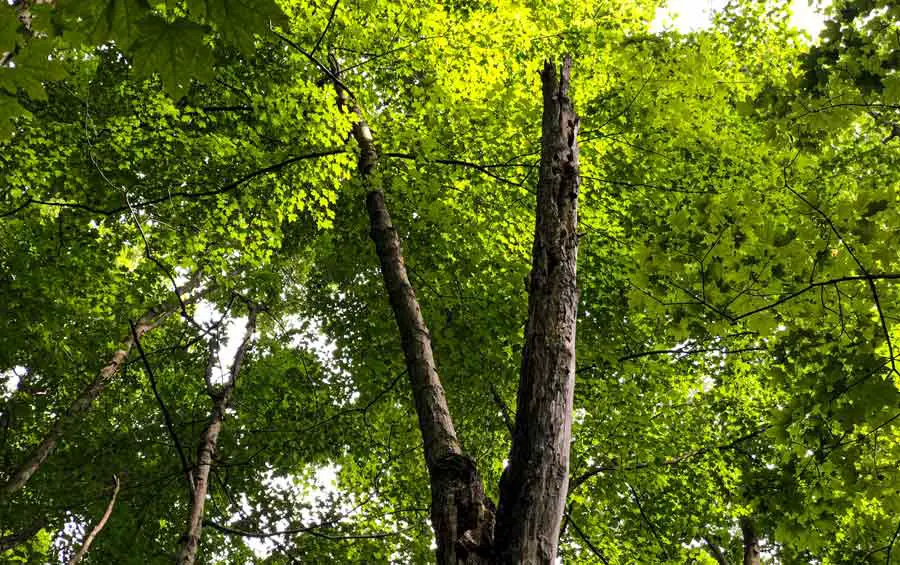
It is also worth mentioning that just because you see green leaves in the canopy doesn’t always mean those leaves are from the tree. I came across this situation a couple of times. I thought I had a perfect tree picked out, but when I looked up into the canopy I saw that the green leaves were not in fact from the tree, but from the vines growing on the tree. The tree itself was actually mostly dead. If it had been any darker that day, I might have missed that detail and put myself at risk. I cannot stress the importance of making sure you have enough daylight to inspect the trees you intend to hang from thoroughly. If you see even the smallest part of the tree has died, don’t risk it. You don’t know what is truly happening on the inside of that tree. Move on. There are plenty of other trees to choose from.
7. The Bark
Inspect the bark of the trees thoroughly. If the bark is damaged, there is a high likelihood that pests have taken up residence and are inside feasting on the wood. They are slowly killing it and the tree’s integrity is compromised.
If a tree is missing large portions of its bark, the tree is exposed to the sun and weather elements that are drying it out and damaging it further. This will ultimately kill the tree.
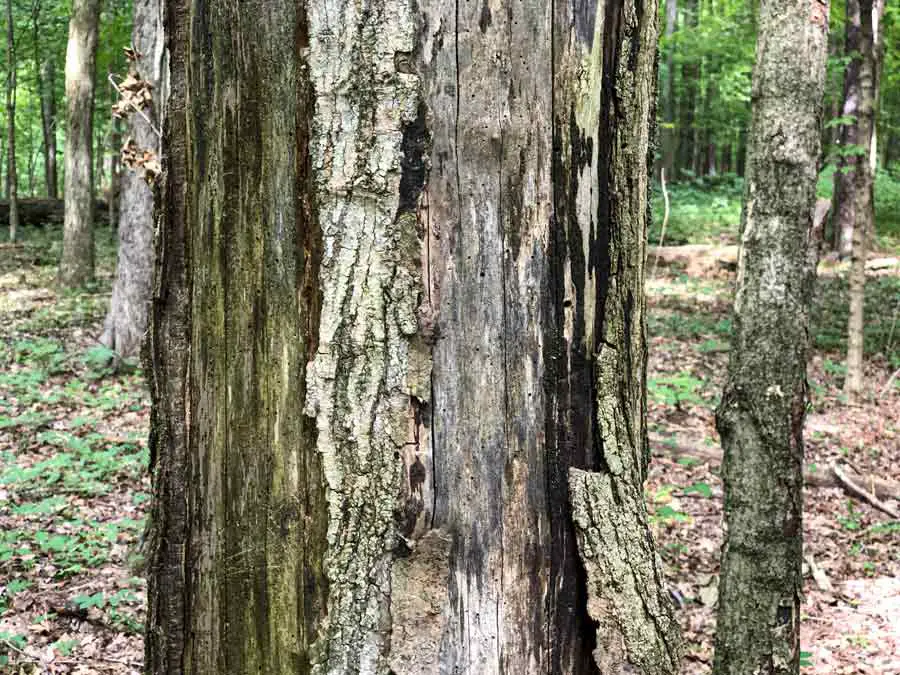
Mold and fungus are also another danger to trees. Both feed off of the exposed living tissue of the tree. Once the trees are infected, the fungus will cause rot and the tree will die. Fungus infections can also spread from tree to tree – something to be aware of.
8. Weather Concerns
If you hammock camp in inclement weather, it’s a wise idea to find trees that will allow you to pitch your hammock perpendicular to the direction of the wind. Doing so will prevent rain from blowing in on you and your tarp will take the hit instead.
9. Great View
You’re a hammock camper. You have more options than most tent campers do. Take advantage of it. If you have the time and daylight, don’t be afraid to walk around a bit and try to find trees that will allow you to have a great view.
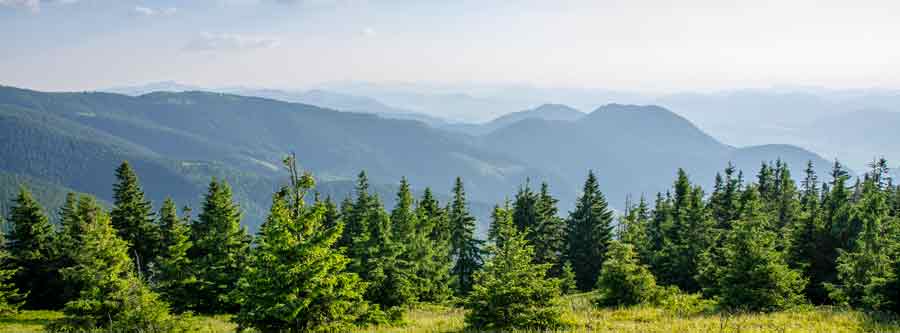
I always take the time to research my destination and try to find potential campsites with a view ahead of time. That way, when I get out there, I have an idea of where I want to look for trees. If I have the choice of setting up my hammock in the middle of the woods or an overlook, you better believe I am going to try to make that overlook view work. There’s nothing like the view of a gorgeous sunrise from your hammock.
10. Types of trees
There isn’t really a worst or best tree for hammock camping. You can hang from just about any healthy tree as long as it meets all the requirements listed above. However, there are certain types of trees known for their resilience and strength. Go-to trees, if you will. My two favorite trees are the oak and maple. I rarely have a problem finding them in my region, but you will want to get to know the trees in your region.
This is a cool website to enter your location into and it will bring up native plants and trees in your area. It’s still in beta testing, but it seemed to work well for me : Native Plant Finder
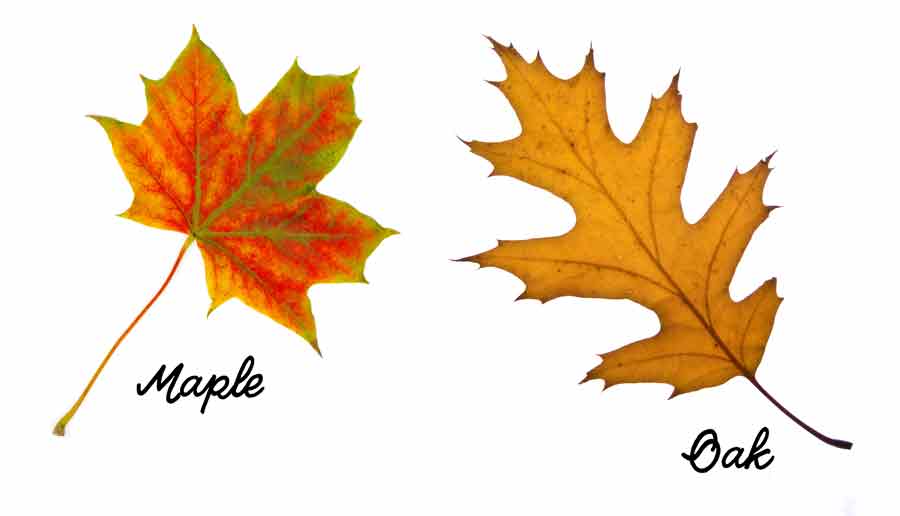
Oak trees: oak trees are great for hammock camping. I honestly seek these out whenever I can. They’re typically easy to spot because of the leaves and you can usually find a bunch of acorns on the ground around them. There are a lot of different types of species of oak trees so if you are in North America, and in the woods, you have a good chance of finding oak trees. The biggest issue I run into sometimes with oak trees is the diameter of the trunk is too big for me to throw my straps around and I have to extend my straps.
Maple trees: maple trees are fantastic for hanging your hammock, especially in the fall months. The foliage is a beautiful spread of orange and red leaves. Maple trees are definitely known for being resilient since they can live for over 200 years. They are also known for their syrup which I am a personal fan of. The great thing about a maple tree, even though it does produce sap, you will not find any on the bark, so your straps will not get sticky.
11. Avoid Pine Trees
It’s good practice to avoid pine trees. I’m not saying you can’t hang from a pine tree, because sometimes you don’t have another choice, but I try to find other options if I can. I avoid pine trees mostly because of sap. It’s sticky and a pain to get off yourself and your gear. You will have to wash your straps when you get home.
12. Trees on angled ground
Don’t discount trees as possible candidates just because they are on angled ground such as a hill. Depending on the situation, you may need to use trees that are not on level ground. Hammocks are great because we can hang on the side of the hill and still be perfectly level. You can’t do that in a tent.
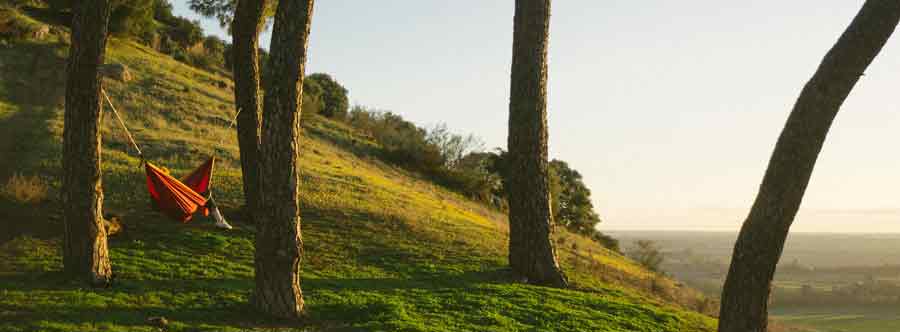
The key is to, as always, be safe about it. If the ground beneath you is at too much of an angle, it can be a little troublesome when it comes to getting in and out of your hammock. If you have a lot of experience getting in and out of your hammock, then this doesn’t really apply to you. If I am on my own, I have no problem setting up on angled ground. However, when I am with my kids and wife I look for flatter ground. I definitely don’t want them to fall getting out of their hammocks.
Bottom line, I don’t want you waking up in the night because nature is calling and you get out of your hammock and go rolling down the hill. I trust that you will use your best judgment.
Now Go Find The Right Trees
Finding the right trees for your hammock is somewhat of an art form. It takes practice and experience, but eventually, it will become second nature. Don’t get overwhelmed. Take it one tree at a time.
No matter where you hang, I hope you have a great time in the Wanderful Wild!
